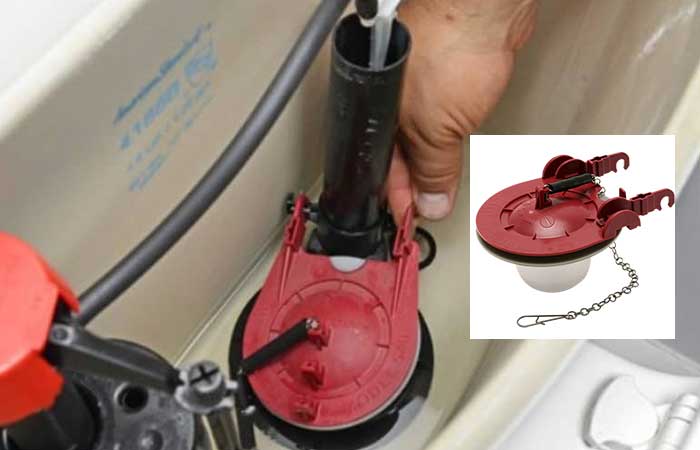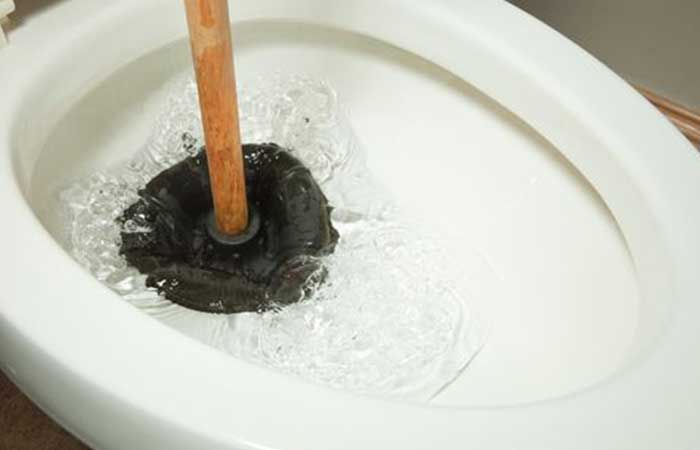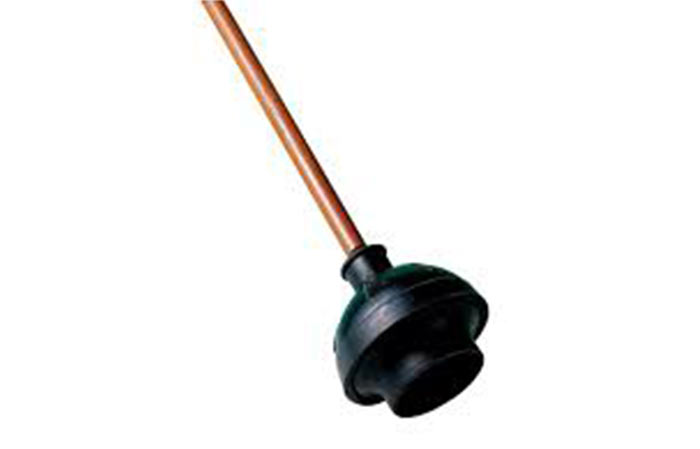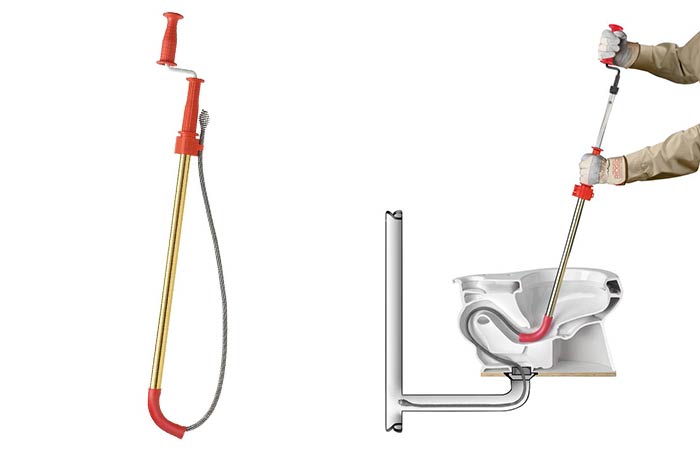Toilet Water Rises too High when Flushed
As unlikely as it may sound, water in your toilet bowl can settle at a higher level than it normally is. Moreover, the water can keep rising to a point it appears to overflow. In most cases this occurs when you flush the toilet, adding more water into the bowl.
When water in the toilet bowl rises too high, it indicates that a faulty flapper that results in uncontrolled flow of water from the tank, a blockage at the P-trap restricting wastewater from passing or the trap way is small and passes very little water as compared to how much water is flushed into the toilet bowl.
The following is a complete guide on how to identify the issues with step-by-step instructions and hacks to fix and prevent unnecessary high-water levels.
Faulty Flush Valve Seal
The flush valve seal/flapper is the plug that falls against the drain hole (flush valve drain seat) on the bottom of the tank and holds water in until the next time you flush. The work of the flapper is to control the amount of water released to the bowl.

When the flapper wears out or the chain holding it is too short more water gets into the bowl raising the level. Faulty flappers are also known to cause of leaking or running toilets
To fix a faulty flapper the best option is to replace it or you may need to lengthening the chain, but it’s important not to lengthen it too much or the toilet won’t flush properly. It’s easy to remove and new flappers are inexpensive.
Drop-in bleach tablets make flappers wear out more often; avoid these automatic cleaners.
Trap Way Obstruction
Any toilet blockage should be fixed as soon as possible unless you’re not interested in using the toilet. If the flapper is working fine, the trap should be the next explore. The vents can be looked into after you have cleared any clogs.
An obstruction in the p-trap one of the most obvious rising water in the The toilet water is rising when flushed to mean there’s a temporary obstruction at the P-trap.

For those of you unfamiliar with what that is, the P-trap is the bend or hump right after the bottom of the bowl where water passes through to get into the drain pipe.
It’s U-shaped and holds a small amount of water that prevents sewer gases from rising into your house.
Whenever there’s a clog, water from the bowl can’t move to the drainpipe, which is why the water can also rise to the rim of the toilet and eventually overflow from the toilet bowl.
How to Fix It
You fix the problem by checking for the position of the clog. The piping system also called the colon could be obstructed anywhere and unless you clear the clog the water will remain high in the bowl, and even gets worse with every flush.
For partial clogs, the item obstructing the trap way could be close. Begin by putting on rubber gloves and sticking your hand into the drain.
Make sure the gloves are long enough to cover up to your forearms. Reach into the colon and feel for any obstructions.
If you can feel anything, pull it out and you should see water flowing out of the bowl into the drains showing the clog has been cleared.
If you don’t find anything, the blockage may be further down the pipe, so the next step is to try unblocking it with a plunger.
Using a Plunger
A plunger will exert suction pressure into the trap way breaking apart the waste causing the clog.
For excellent results, opt for the toilet plunger, also called closet plunger or flange plunger. It’s bell-shaped and creates a better seal and vacuum with curved openings such as the toilet bowl.

- For a good seal, ensure the water is just enough to fill the bell shape at the end of the plunger.
- Place it over the opening with the plunger at an angle. Tilting it at an angle adds more suction as you plunge.
- Press the plunger over the hole and push it inwards.
- Pump the plunger in and out in an aggressive manner while maintaining the seal. The force will either push or pull the waste to loosen the clog.
- Plunge in three to five intervals and break the seal to check if the clog has cleared.
- Repeat for another interval and check. If there’s no change, try a toilet auger or snake.
Using an Auger

The closet auger has a J-shaped tube and a cable. The cable is fed into the drainpipe up to the location of the clog. After that, you could either push or pull to fix the issue.
- Unwound the cable from the tube. It may be long or if the machine is automated, it will keep on coming off the tube for as long as the cable is.
- Using the hooked end of the cable, feed the toilet hole with the snake for as further down as it can. Once you reach a point of resistance, that’s the clog.
- Feel the tension in the cable as you decide whether to retrieve the clog or push it further down the drainpipe.
- Crank the cable clockwise to try to break apart the waste. Keep cranking it more and more as you feel whether the tension is reducing or not.
- Pull back the cable and try again in three to five intervals.
- If you spot any changes such as water is slowly starting to drain, you could keep up with the cranking until you’re done.
- Flush the toilet to ascertain the clog is cleared.
Blockage in the Vent
Another reason water may be rising when flushed is a blockage in the vent. The vent pipe could be obstructed by tree branches and leaves that block the path in the drainpipe consequently causing a blockage in the toilet.
To clear this blockage, follow the steps below;
- Head up the roof and locate the vent opening. If it has a covering or a grid, slide it open. You may need a screwdriver for this.
- Sweep the opening to remove debris laying at the opening. You don’t want it getting into the vent.
- Start by pouring water into the vent pipe using a spray or garden hose. This should clear most if not all the waste. If not, check inside the vent for water levels. If it rises, the blockage is deeper in the vent
- Feed a 20-foot auger into the vent opening and crank it up. Push till you reach a point of resistance. That should be the obstruction you’re looking for.
- Crank the auger around as you try to clear the clog. Water should begin to recede.
- Spray in some more water to check if it overflows again. If it doesn’t the vents are now clear.
- Clean the surrounding areas to ensure no branches, leaves or debris gets back into the vent.
- Cover up the vent using a cover or a grid. All done!
Why is the Toilet Water Rising Before going Down When Flushed?
First off, there may be a momentary rising of water after a flush if there is a pressure difference between the water leaving the P-trap and what enters the bowl.
The atmospheric pressure will cause the water to first rise in the toilet bowl before everything is flushed entirely to the drain and the water settles at normal water level. This case is not a problem but just how the toilet operates.
Excess water in Bowl Effects
Too much water in the bowl will make the toilet unusable… eventually it could get to a point the wastewater is left backing up to the rest of the outlets in the house including the bathroom sink, shower, or tub. Identifying and fixing the issue early will save you a lot in the long run.